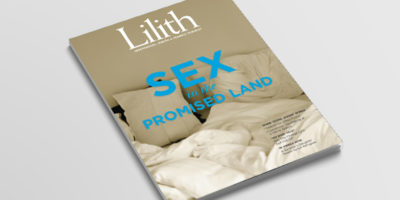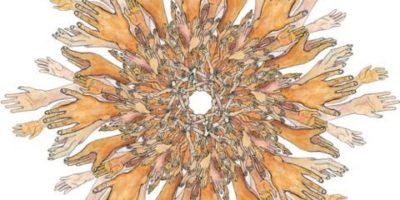Mushroom Foraging — A Traditional Jewish Woman’s Pursuit!
“Wait, c’mere, is this one?” Running over and making out a lovely, upright yellow form peeking out from the fallen branches, I shrieked in delight, “Yes, yes, yes it is! Our first chanterelle!”
We only found a few more fresh, musky-smelling specimens that evening, but something about our methodical search through the deep Northwest forest reminded me of my great-grandmothers’ pursuit of the same foraged food in the woods of Poland and the Ukraine, many decades ago. Wild mushrooms have been, of course, popular foods among all European and Middle Eastern cultures for millennia, but especially when Jews all over Europe could not own property, raising poultry, foraging and collecting the fruits of pasture and forests were part of seeking survival. And women were the main foragers in extended families.
The “Jews ear” or “Judas ear” mushroom (Auricularia auricula-judae) — the familiar “wood ear” — is a little mushroom that grows on tree bark, sticking out from the tree’s truck in rusty pink-brown colonies that look very much like groups of little veined ears! The name “Jew’s ear” apparently was a contraction over time from “Judas ear,” so named because, according to Christian legend, after Judas Iscariot reputedly betrayed Jesus he hanged himself from the branch of an elder tree, which often supports communities of this edible fungus.
“The Poisonous Mushroom” is a famous story from the eponymous children’s book Der Giftpilz, published in 1938 by Julius Streicher, the editor of the widely read weekly newspaper Der Sturmer, devoted to arousing hatred against Jews in Nazi Germany. A mother tells her children as they gather mushrooms in the woods that just as one must be able to tell the poisonous mushrooms from the good mushrooms which resemble them, so too must one be able to differentiate between Jews and non-Jews in society, even though Jews may look the same or act normally. The worthy mother praises her children for already knowing that it is the Jews who are “poisonous,” but despairs that not everyone recognizes them for what they are and relates that just one Jew in a village can poison the whole town, the whole region, the whole country! The idea of Jews as “poisonous mushrooms” killing Germany from its insides became a powerful propaganda message of the Nazis before and during the Holocaust.
Despite this vitriolic anti-Semitism, Jews have had cultural, social, culinary and even early spiritual connections with different fungi. With such a long relationship to edible fungi, Jews have created, adopted and passed along hundreds of recipes for mushrooms. (Recipes for mushrooms in cream [Griby so Smyetonoy], wild mushroom walnut soufflés, lamb stew with chestnuts and pomegranates and more here.)



